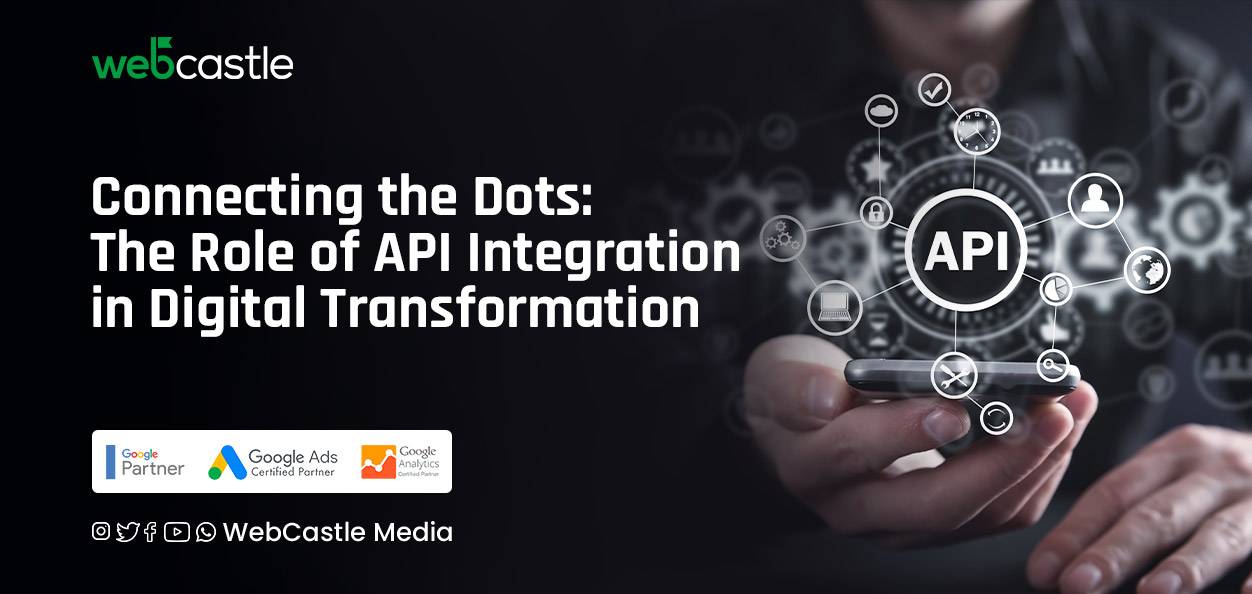
In the digital age, the ability to adapt, evolve, and innovate is paramount. As businesses worldwide undergo digital transformation, the role of API (Application Programming Interface) integration emerges as a cornerstone of this evolution. But what exactly is API integration, and why is it so crucial in the digital transformation journey? Let’s connect the dots.
An API is fundamentally a set of guidelines and procedures that permit various software programs to connect with one another.API integration, therefore, is the process of connecting different software systems using these APIs, enabling them to work together seamlessly. Think of it as the digital glue that binds various software components, ensuring they function as a cohesive unit.
Digital transformation is not just about adopting digital technologies; it’s about changing the entire way a business operates and delivers value to its customers. It involves a shift in culture, processes, and operations. And at the heart of this transformation lies API integration.
Enhanced Connectivity: In today’s interconnected world, businesses use a myriad of software solutions – from CRM systems and marketing platforms to e-commerce gateways and analytics tools. API integration ensures these systems communicate effectively, eliminating data silos and enhancing operational efficiency.
Scalability: As businesses grow, their technological needs evolve. APIs allow for the integration of new tools and systems without overhauling the entire IT infrastructure. This flexibility is crucial for businesses aiming to scale in a dynamic market.
Innovation: APIs open the door to innovation. By integrating with various tools and platforms, businesses can leverage the best features of each, leading to the creation of unique, innovative solutions that cater to specific needs.
Real-time Data Access: In the digital age, real-time data is gold. API integrations facilitate real-time data exchange between systems, enabling businesses to make informed decisions promptly.
Customer Experience: With integrated systems, businesses can offer a seamless customer experience. Whether it’s personalized marketing campaigns, instant customer support, or streamlined e-commerce processes, API integration plays a pivotal role.
E-commerce Platforms: Consider giants like Amazon or Shopify. They integrate with payment gateways, inventory management systems, and marketing tools through APIs, offering a seamless shopping experience to users.
Banking and FinTech: Modern banking apps integrate with various financial tools and services, providing customers with a comprehensive financial dashboard.
Healthcare: Patient management systems, diagnostic tools, and telemedicine platforms are interconnected through APIs, ensuring efficient patient care and data management.
Challenges in API Integration
While the benefits are manifold, API integration is not without its challenges:
Security Concerns: With data exchange comes the risk of breaches. Ensuring secure API integrations is paramount.
Integration Complexity: Not all systems are designed for easy integration. Overcoming compatibility issues can be a hurdle.
Maintenance: As software systems update, APIs must evolve to ensure continued compatibility.
The Road Ahead: Future of API Integration
The future is integrated. As technologies like AI, IoT, and blockchain become mainstream, the role of API integration will only magnify. Businesses will need to adopt a proactive approach, ensuring their systems are not just integrated but also ready for future integrations.
Also Read: Digital Transformation: How Technology is Changing Business
Conclusion
Connecting the dots between digital transformation and API integration reveals a clear picture: the latter is the engine driving the former. As businesses navigate the digital landscape, the role of API integration as a facilitator of growth, innovation, and efficiency becomes undeniable. In the words of tech visionary Marc Andreessen, “Software is eating the world.” And in this software-driven world, API integration is the thread weaving the digital tapestry.

Call
